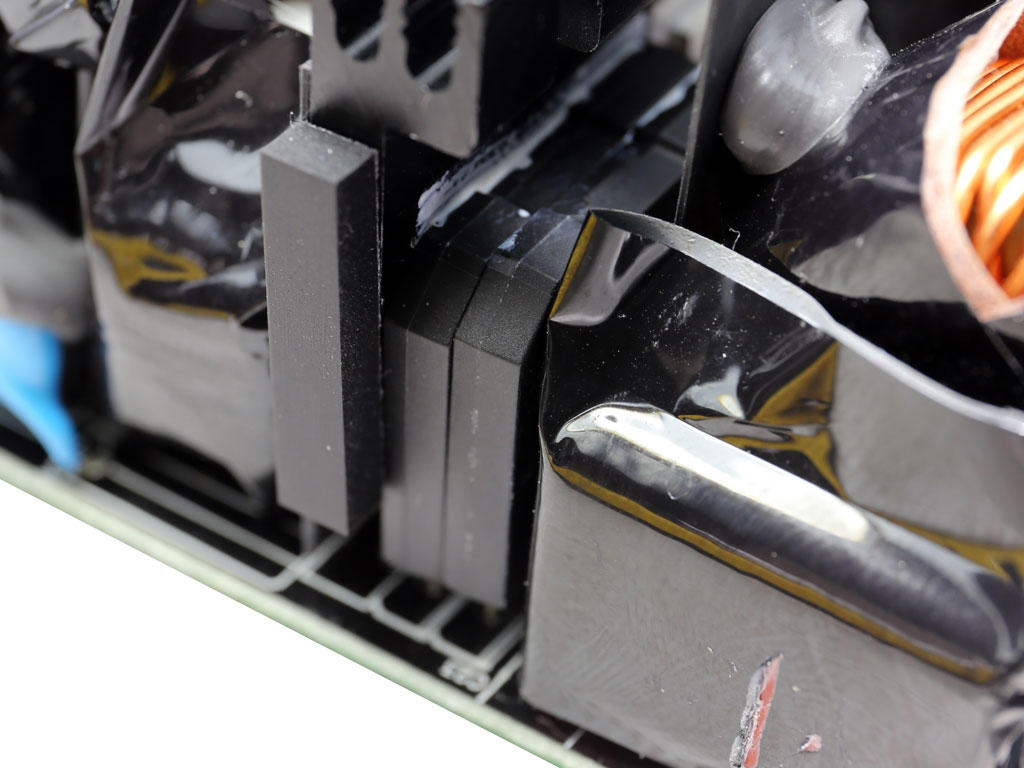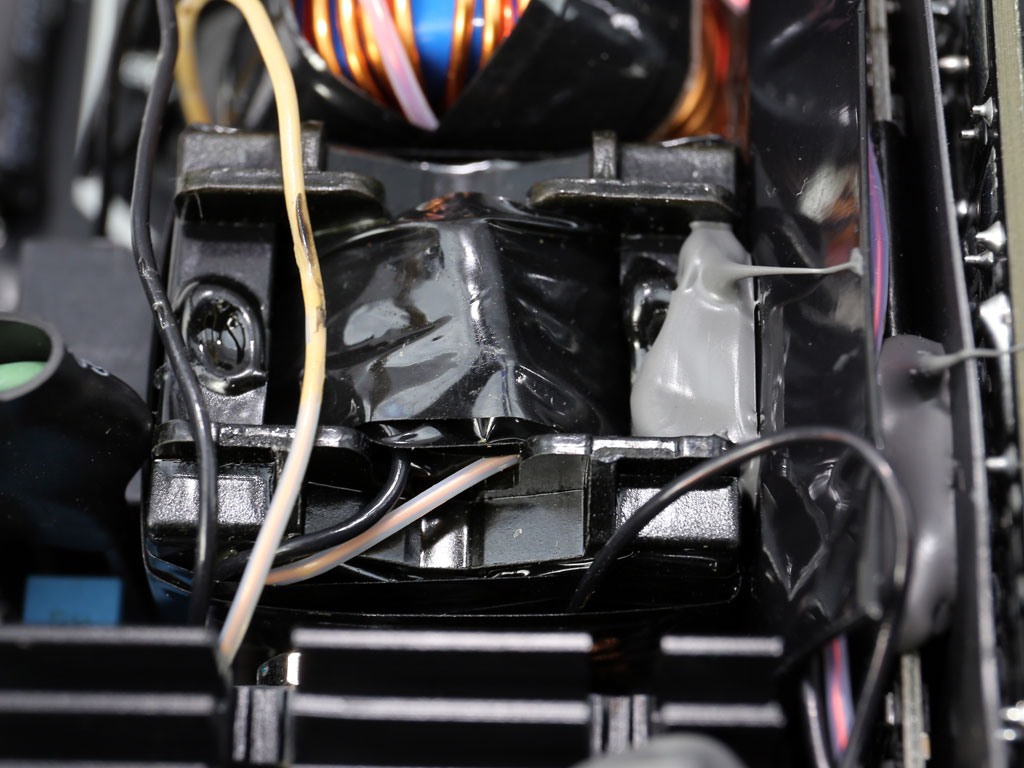EVGA SuperNOVA 650 GM PSU Review: Big Power In A Small Form Factor
Why you can trust Tom's Hardware
Teardown and Component Analysis
Before proceeding with this page we strongly encourage you to a look at our PSUs 101 article, which provides valuable information about PSUs and their operation, allowing you to better understand the components we're about to discuss.
| General Data | |
|---|---|
| Manufacturer (OEM) | FSP |
| Primary Side | |
| Transient Filter | 4x Y caps, 2x X caps, 2x CM chokes, 1x MOV |
| Inrush Protection | NTC thermistor & relay |
| Bridge Rectifier(s) | 2x |
| APFC MOSFETs | 2x Infineon IPA60R180P7 (650V, 11A @ 100°C, 0.18Ω) |
| APFC Boost Diode | 1x Infineon IDH06G65C6 (650V, 6A @ 145°C) |
| Hold-up Cap(s) | 1x Nippon Chemi-Con (420V, 330uF, 2000h @ 105°C, KMZ) |
| Main Switch | Main FET: 1x STMicroelectronics STF25N80K5 (800V, 12.3A @ 100°C, 0.26Ω) |
| Reset Switch | Infineon SPD02N80C3 (800V, 1.2A @ 100°C, 2.7Ω) |
| Combo APFC/Switching Controller | FSP 6600D IC |
| Topology | Primary side: Active clamp reset forward topology Secondary side: Synchronous rectification & DC-DC converters |
| Secondary Side | |
| +12V MOSFETs | 5x Infineon BSC0702LS (60V, 84A @ 100°C, 2.7mΩ) |
| 5V & 3.3V | DC-DC Converters: 2x Infineon IPD060N03L G (30V, 50A @ 100°C, 6mΩ), 2x Infineon IPD040N03L G (30V, 76A @ 100°C, 4mΩ) PWM Controller: APW7159C |
| Filtering Capacitors | Electrolytics: Nippon Chemi-Con (1-5000 @ 105°C, KZE), Nippon Chemi-Con (4-10,000 @ 105°C, KY), Rubycon (2-5000h @ 105°C, ZLH) Polymers: Chemi-Con, Teapo |
| Supervisor IC | Weltrend WT7527 (OVP, UVP, OCP, SCP, PG) |
| Fan Model | Yate Loon D92BH-12B (92mm, 12V, 0.60A, 46CFM, 38 dB[A], double ball bearing) |
| 5VSB Circuit | |
| RectifierS | Silan Microelectronics SVF3N80F (800V, 1.9A @ 100°C, 4.8Ω) & 1x Nexperia PSMN2R0-30YLE (30V, 100A @ 25°C, 2mΩ) |
FSP is using an Active Clamp Reset Forward (ACRF) topology in its new SFX platform. We don't have especially high expectations of the ACRF design, especially when it comes to transient response testing. After all, this configuration is mostly used to keep production cost low. Fortunately, it does facilitate a long enough hold-up time, despite small bulk capacitors.




The APFC converter uses a high-quality Japanese cap. Moreover, electrolytic capacitors on the secondary side are provided by Japanese manufacturers. Only some of the polymer caps come from Teapo, a Taiwanese company. We're not worried about them though; they're able to cope with tough conditions and all of the Teapo polymer capacitors we've seen have proven to be reliable.
FSP's decision to use a double ball bearing fan was a good one. It won't mind operating at high temperatures. FDB fans, on the other hand, struggle with ambient temperatures above 40°C. Small form factor cases usually lack copious airflow, so we have to assume that any SFX PSU is going to be exposed to tough conditions.



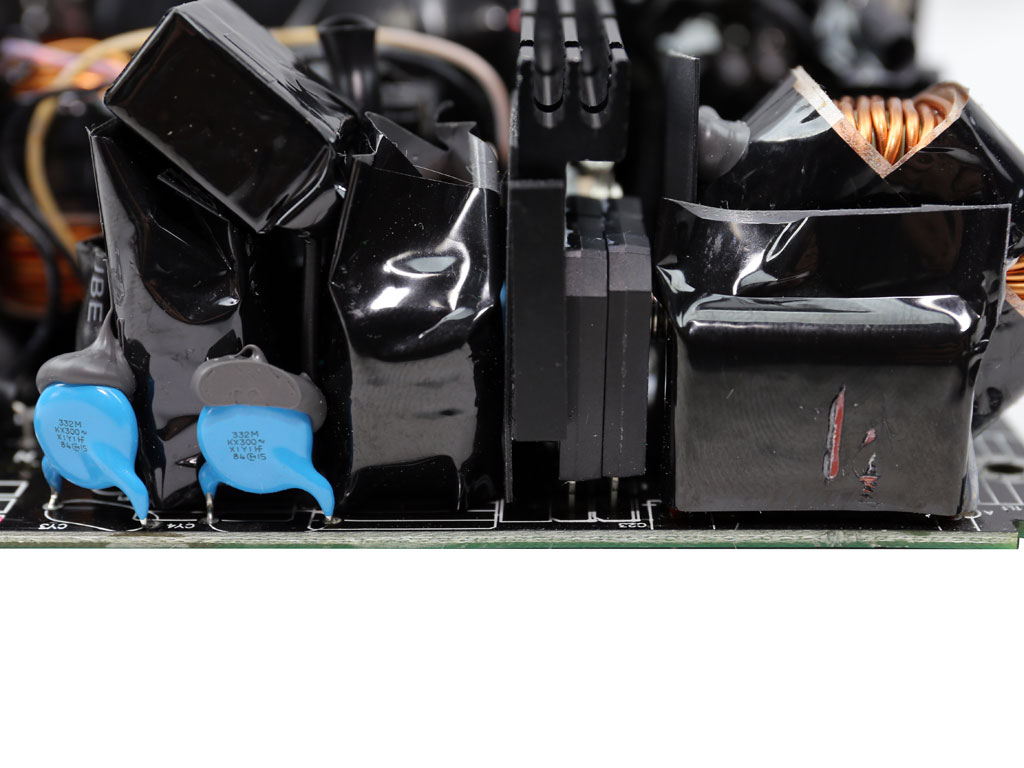
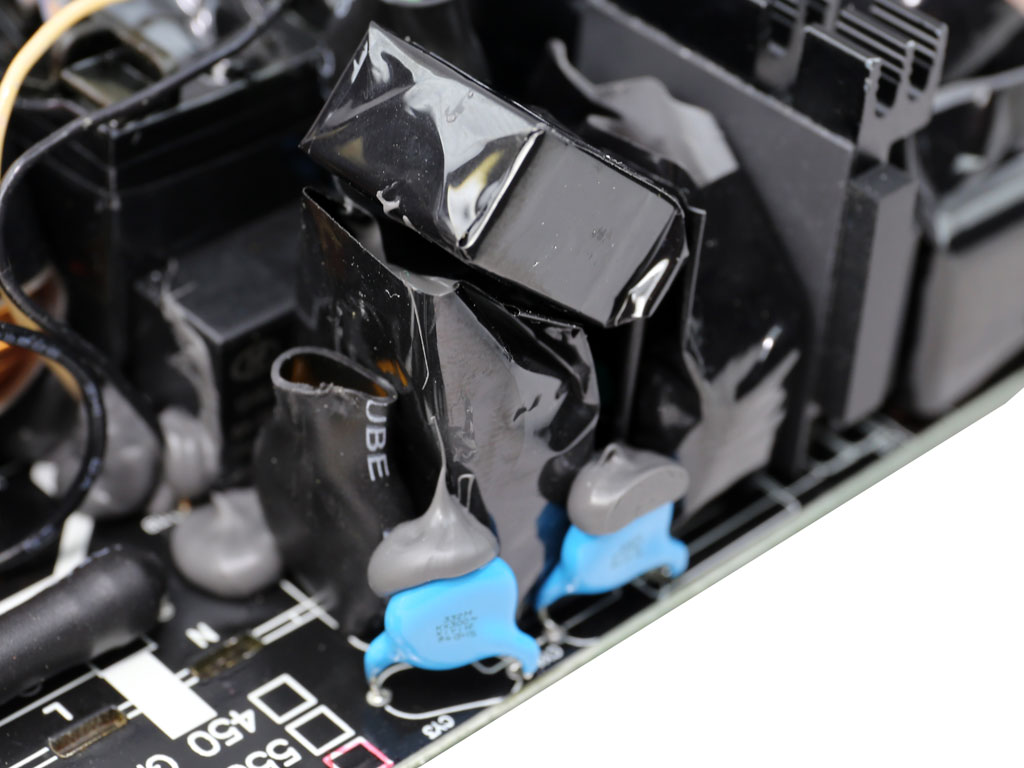
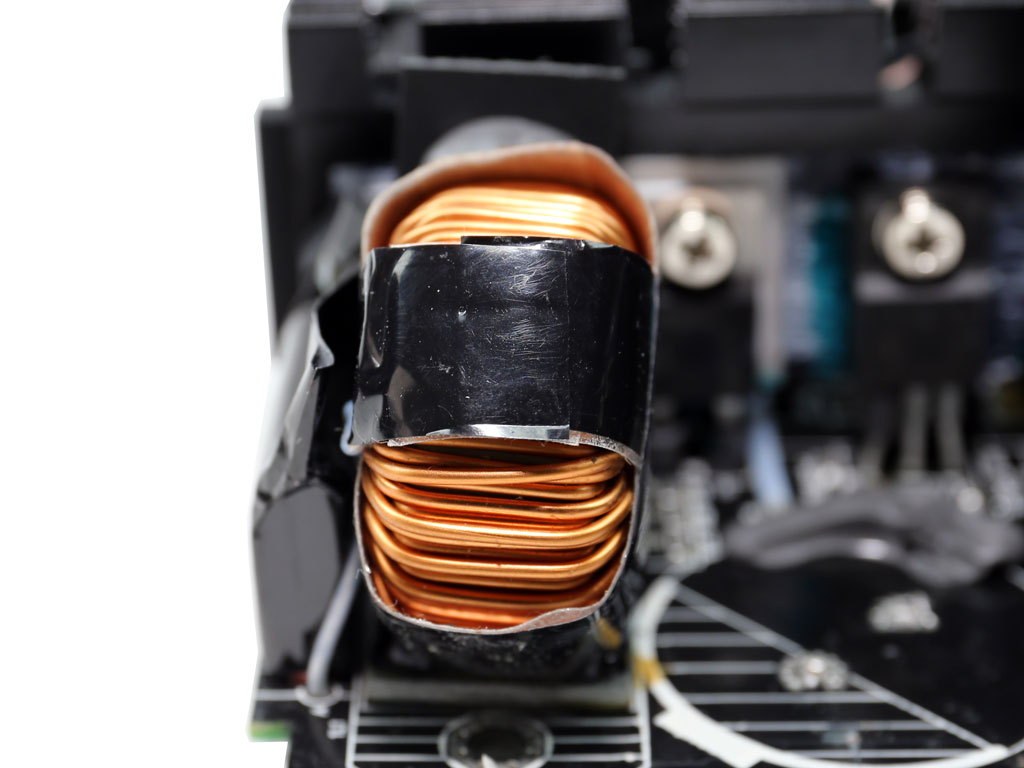
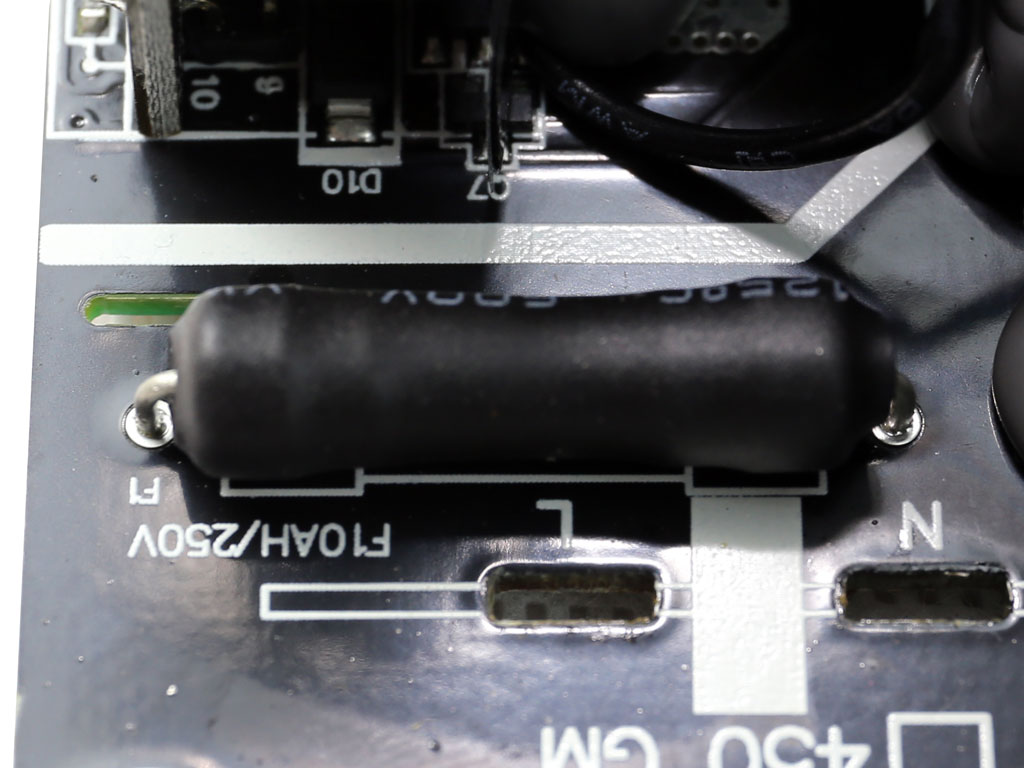

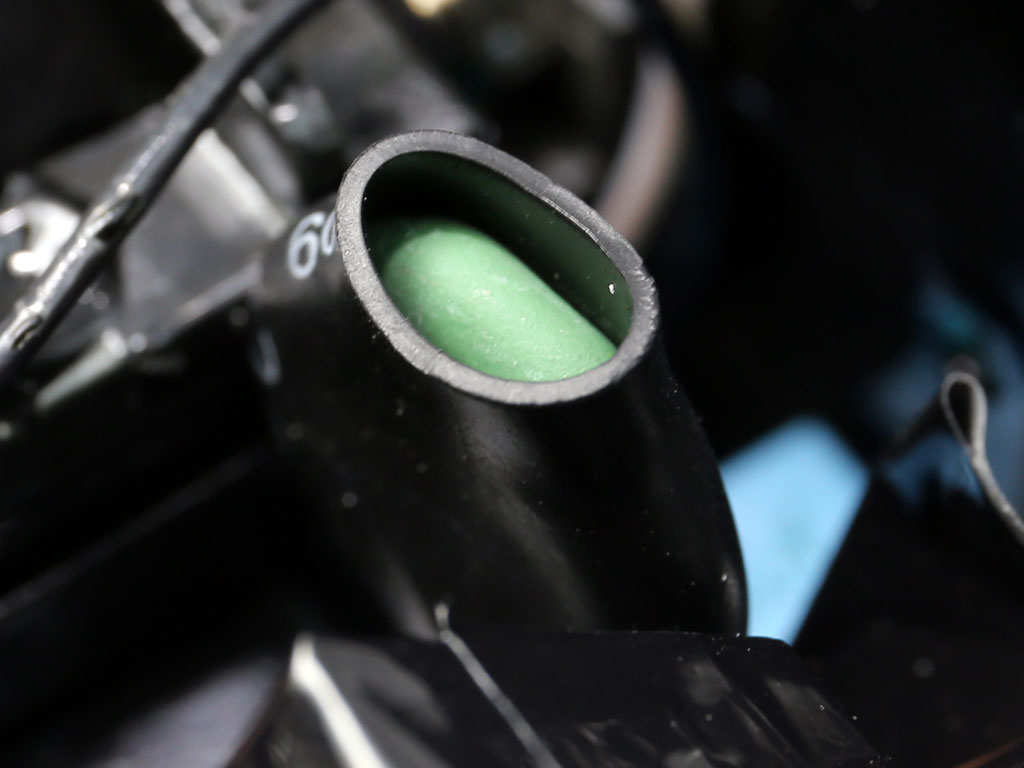
The transient filter starts at the AC receptacle with two Y and one X caps. It continues with the same number and type of capacitors on the main PCB, along with two CM chokes and an MOV. There is also a NTC thermistor, accompanied by a bypass relay, which provides protection against large inrush currents. Finally, the fuse is covered in heat-shrink tubing.
Both bridge rectifiers are bolted together, which increases their operating temperatures. They should have instead been bolted to opposite sides of a dedicated heat sink for more efficient cooling.
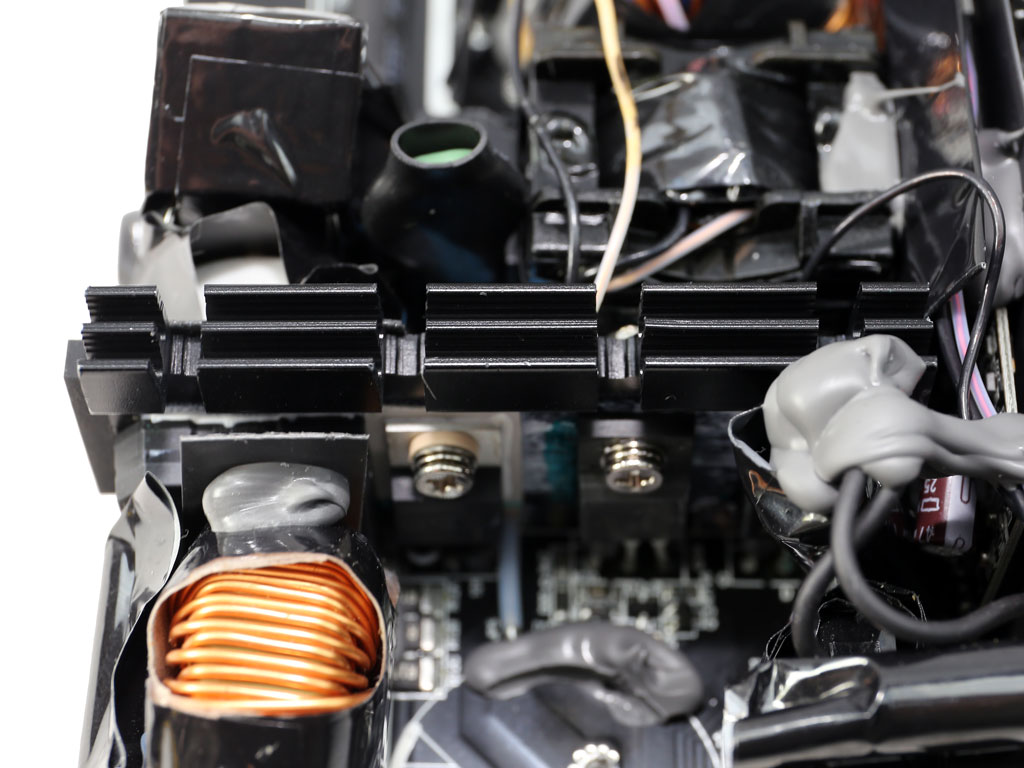
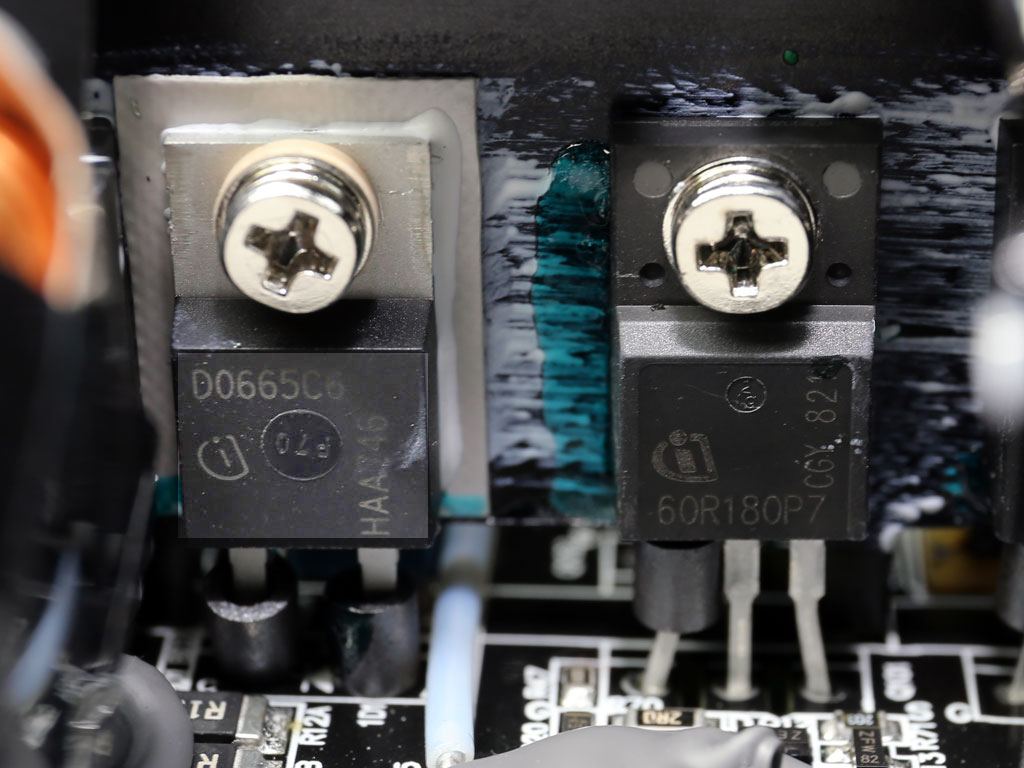

The APFC converter uses two Infineon IPA60R180P7 FETs and a IDH06G65C6 boost diode. The bulk cap is provided by Nippon Chemi-Con and its capacity is low at 330uF. Because of the ACRF topology, though, the 650 GM still achieves a hold-up time longer than 17ms. For the sake of science, we swapped the small bulk cap with a 470uF one we had from another PSU. The 650 GM operated properly for about 30 seconds and then exploded. Apparently, the ACRF topology is picky about the size of its bulk cap.
Get Tom's Hardware's best news and in-depth reviews, straight to your inbox.
An FSP 6600D IC serves as the combo APFC/PWM controller. Unfortunately, we don't know anything about it since FSP keeps its specifications under wraps.
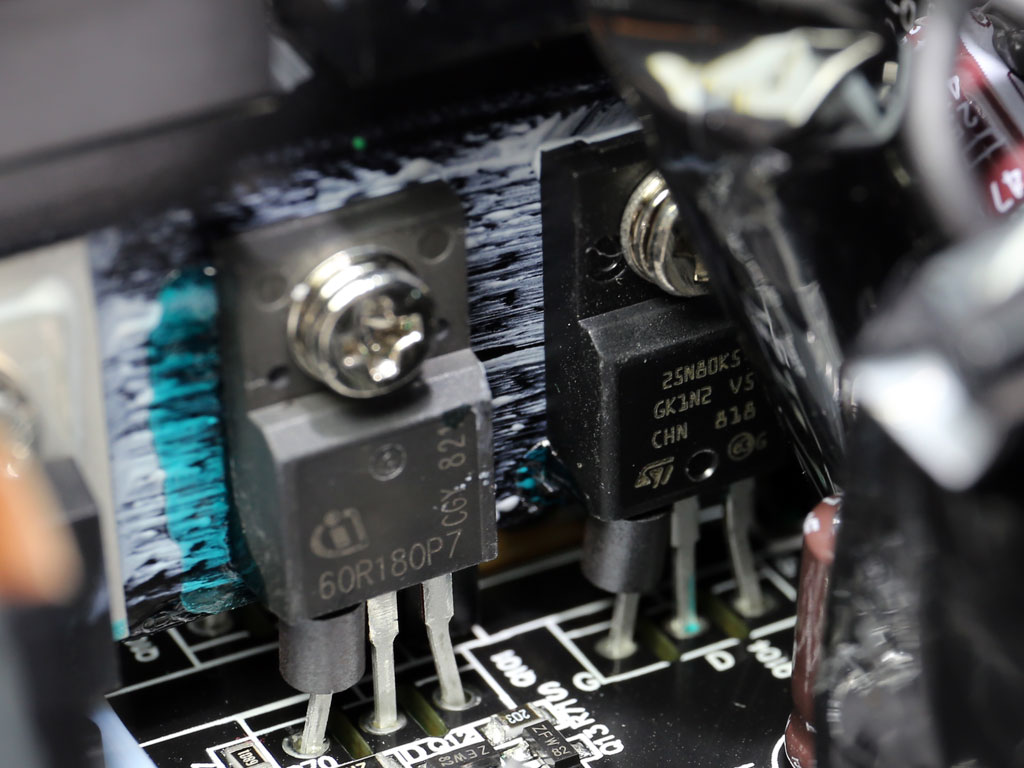
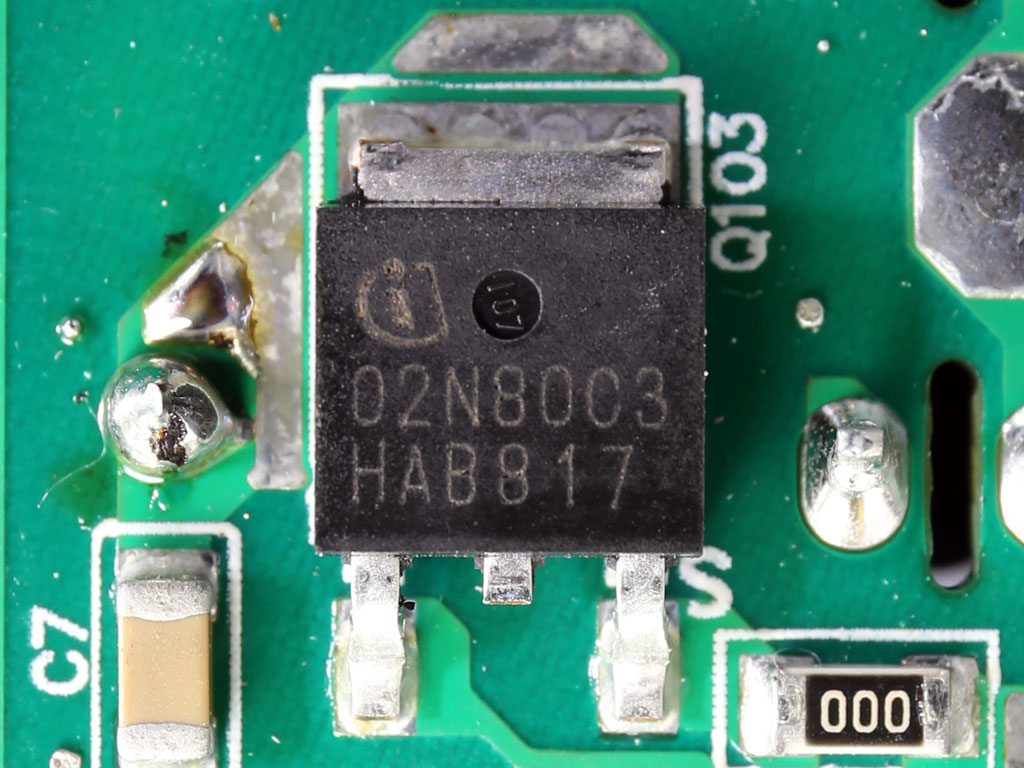
The main switch is a STMicroelectronics STF25N80K5 FET, while the reset switch is an Infineon SPD02N80C3. The latter is installed on the main PCB's solder side.
This is a picture of the main transformer.
Five Infineon BSC0702LS FETs regulate the +12V rail. They're mostly cooled by the chassis, with which they contact through a large thermal transfer pad.



A mix of electrolytic Chemi-Con and Rubycon capacitors, along with a number of Chemi-Con and Teapo polymer caps, handle filtering.





Two DC-DC converters generate the minor rails. Those converters use two Infineon IPD060N03L G and two IPD040N03L G FETs. The common PWM controller is a Anpec APW7159C. On the same board hosting those converters, we also find a supervisor IC, a Weltrend WT7527, which supports OCP for up to two +12V rails.
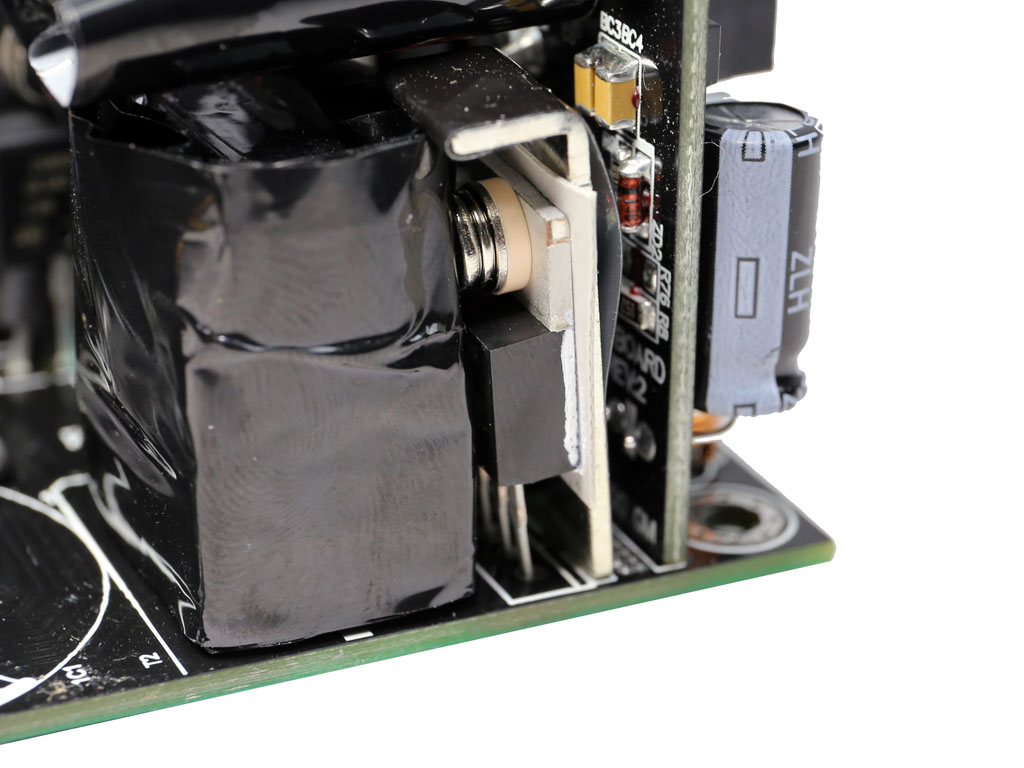


The 5VSB rail is regulated through a pair of FETs: a Silan Microelectronics SVF3N80F and a Nexperia PSMN2R0-30YLE.



On the modular board's front side, several Teapo polymer caps are used for ripple filtering. Two electrolyic Rubycons are also installed there, one of which is part of a PI filter.


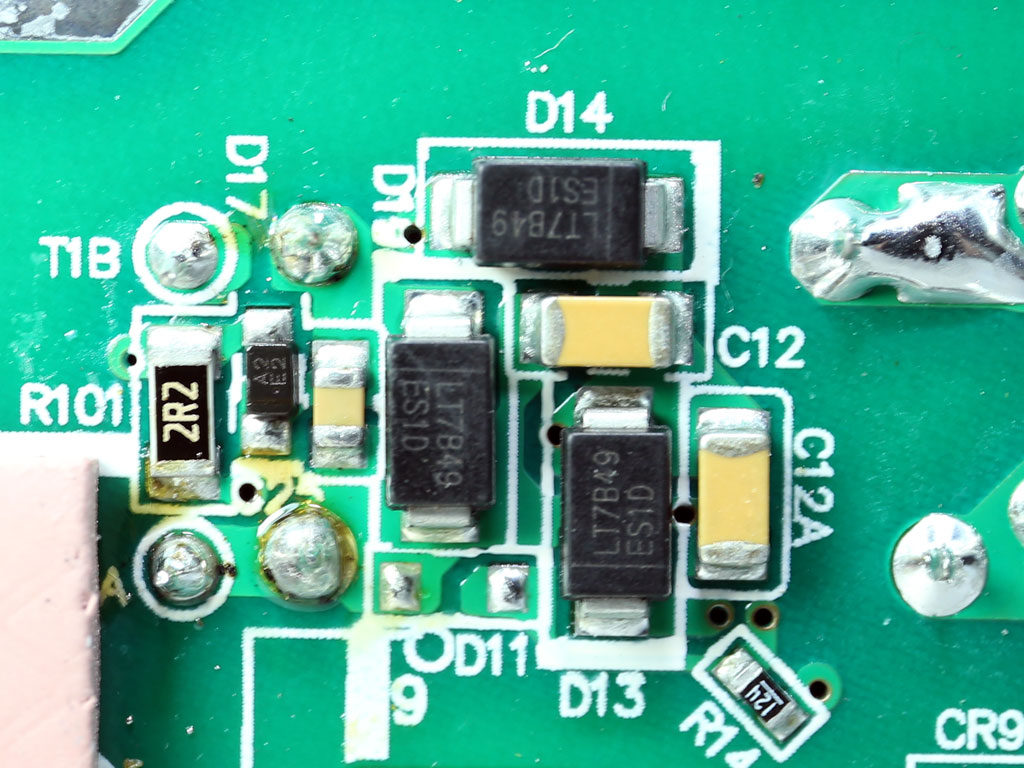
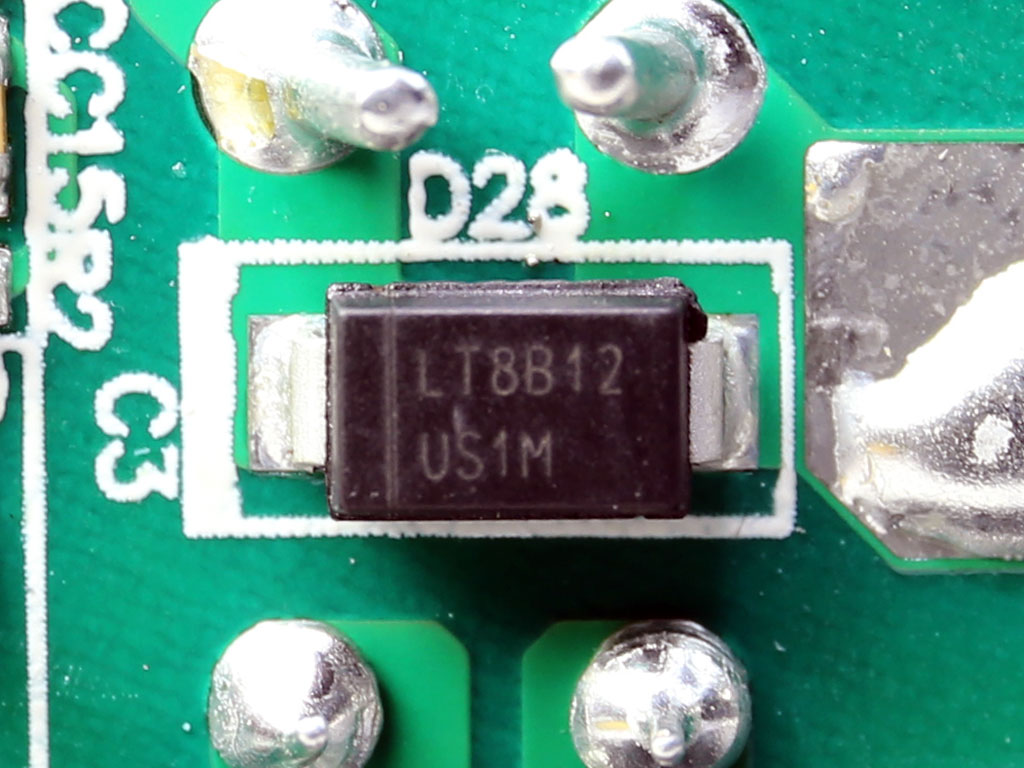
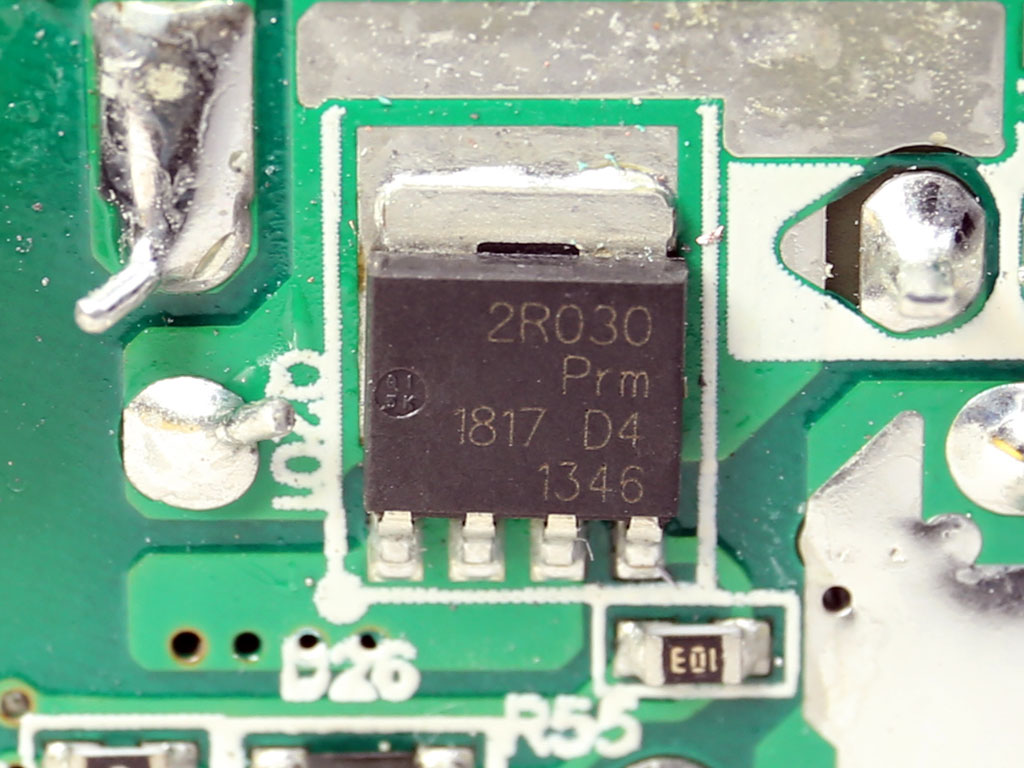
FSP's soldering quality on the 650 GM isn't very good. We've seen much better soldering work from the company.


The 92mm cooling fan is provided by Yate Loon. It uses a double ball bearing and is apparently quick strong since it can draw up to 0.6A. Thankfully, FSP's fan profile isn't particularly aggressive; the acoustics are mild under normal operating conditions.
MORE: Best Power Supplies
MORE: How We Test Power Supplies
MORE: All Power Supply Content
Current page: Teardown and Component Analysis
Prev Page Unboxing Video Next Page Load Regulation, Hold-Up Time and Inrush Current
Aris Mpitziopoulos is a contributing editor at Tom's Hardware, covering PSUs.
